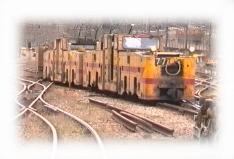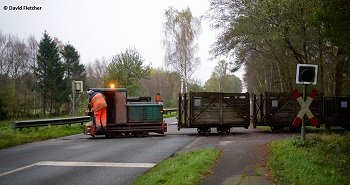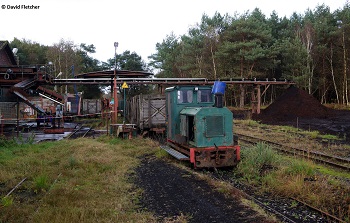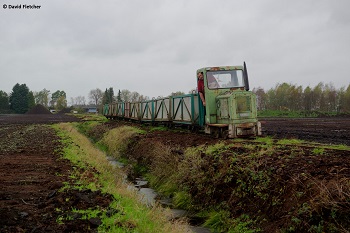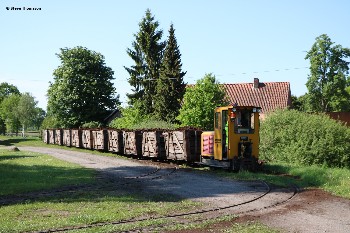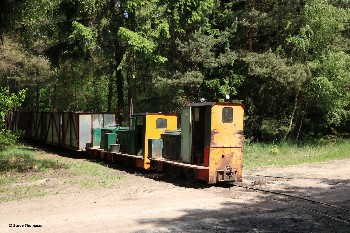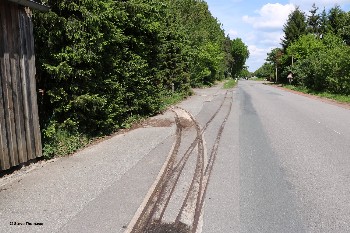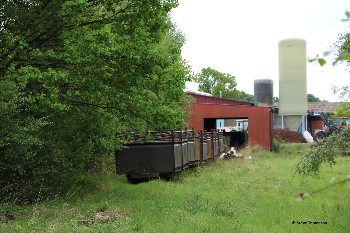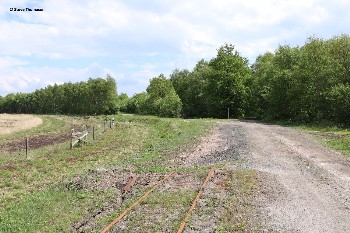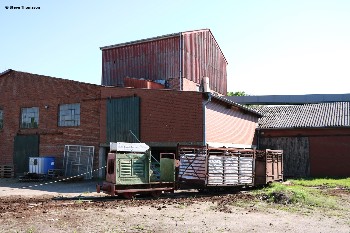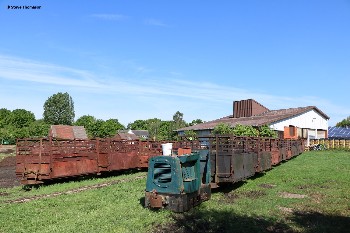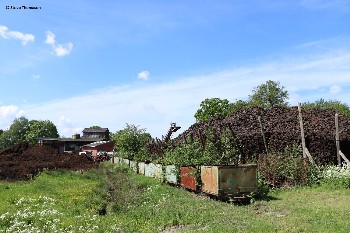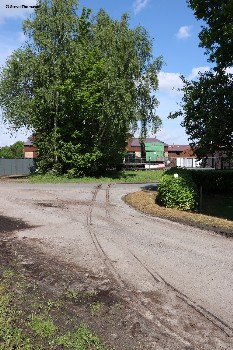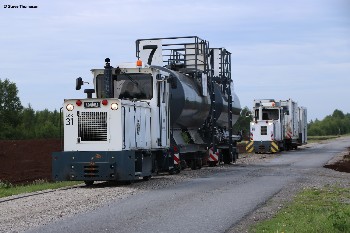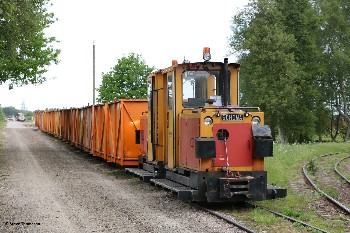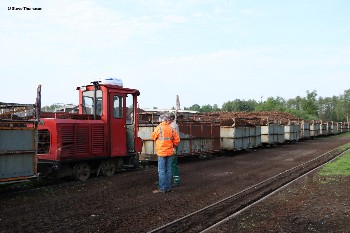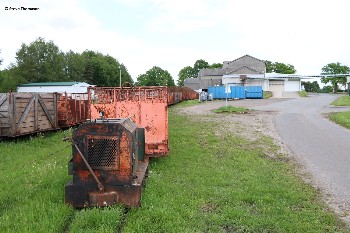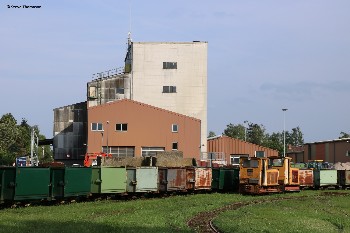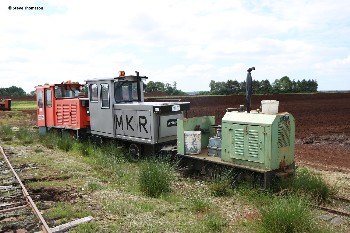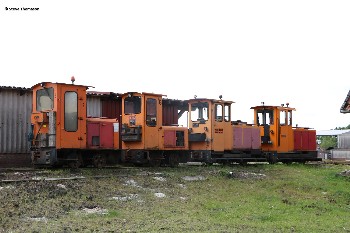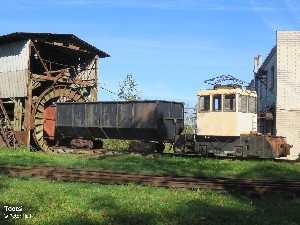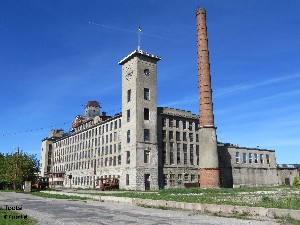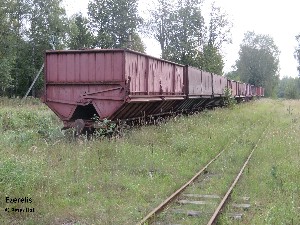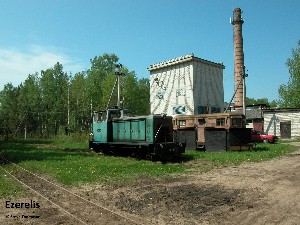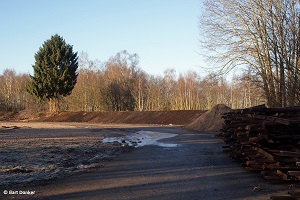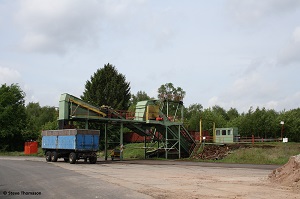Humuswerk Aschhorn, Drochtersen
(Gauge 600mm) This large peatworks appeared to be in daily operation when visited.
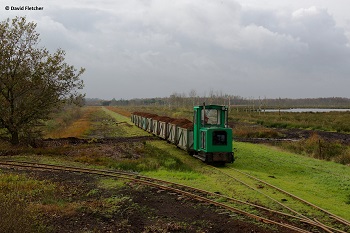
Locos 13 (above), Diema 5240(assumed), and 14 Schöma 5520(assumed), were in use on line work, with a number of other locos parked around the works.
(All above Germany reports Posted 12.11.2017 Source: David Fletcher)
|
FRANCE October 2017
Briqueterie Chimot, Marly
(Gauge: 600mm) This historic brickworks at Marly had exhausted the supply of clay at the current claypit and needed to move the 600mm gauge tracks to another site to serve a new source of clay. In September there had been an appeal to identify any sources of extra track required, but in the end after surveying the new route it was decided that it was not possible to use the railway to extract and transport the clay. So going forward, the transport of clay from the pit will be by road tractor. The 600mm line is still to be used, but not as frequently, running from the clay stockpile at the works to feed the brickmaking machines at the end of the drying sheds. The operation of the 500mm gauge line around the kilns to the drying sheds continues, and is unaffected.
|
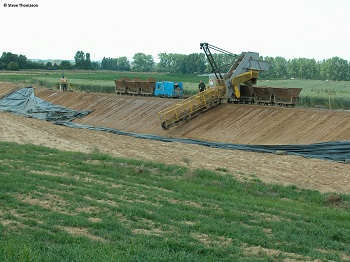
In July 2004, a view at the claypit with the Plymouth loco was at the claypit loading several skips from the bucket and chain excavator.
(Posted 12.11.2017 Source: various)
|
